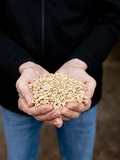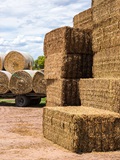Gippsland
20 May 2020
| Date | Gipps 23 | Gipps 22 | Gipps 5YA |
|---|---|---|---|
| 06-Jan-23 | 236 | 100 | 209 |
| 13-Jan-23 | 250 | 100 | 193 |
| 20-Jan-23 | 280 | 100 | 195 |
| 27-Jan-23 | 290 | 100 | 197 |
| 03-Feb-23 | 290 | 100 | 199 |
| 10-Feb-23 | 300 | 100 | 199 |
| 17-Feb-23 | 300 | 100 | 190 |
| 24-Feb-23 | 300 | 100 | 180 |
| 03-Mar-23 | 300 | 100 | 182 |
| 10-Mar-23 | 300 | 100 | 187 |
| 17-Mar-23 | 300 | 100 | 190 |
| 24-Mar-23 | 300 | 100 | 190 |
| 31-Mar-23 | 295 | 100 | 190 |
| 07-Apr-23 | 295 | 100 | 190 |
| 14-Apr-23 | 295 | 104 | 191 |
| 21-Apr-23 | 295 | 108 | 192 |
| 28-Apr-23 | 295 | 113 | 193 |
| 05-May-23 | 295 | 113 | 193 |
| 12-May-23 | 293 | 113 | 209 |
| 19-May-23 | 290 | 113 | 209 |
| 26-May-23 | 290 | 113 | 209 |
| 02-Jun-23 | 290 | 118 | 218 |
| 09-Jun-23 | 290 | 118 | 221 |
| 16-Jun-23 | 290 | 118 | 217 |
| 23-Jun-23 | 290 | 118 | 214 |
| 30-Jun-23 | 285 | 118 | 214 |
| 07-Jul-23 | 285 | 118 | 227 |
| 14-Jul-23 | 283 | 119 | 227 |
| 21-Jul-23 | 280 | 120 | 227 |
| 28-Jul-23 | 280 | 135 | 230 |
| 04-Aug-23 | 265 | 135 | 230 |
| 11-Aug-23 | 265 | 135 | 249 |
| 18-Aug-23 | 265 | 135 | 249 |
| 25-Aug-23 | 265 | 135 | 249 |
| 01-Sep-23 | 265 | 135 | 249 |
| 08-Sep-23 | 135 | 249 | |
| 15-Sep-23 | 135 | 249 | |
| 22-Sep-23 | 135 | 259 | |
| 29-Sep-23 | 135 | 269 | |
| 06-Oct-23 | 135 | 269 | |
| 13-Oct-23 | 135 | 269 | |
| 20-Oct-23 | 140 | 270 | |
| 27-Oct-23 | 140 | 270 | |
| 03-Nov-23 | 140 | 276 | |
| 10-Nov-23 | 140 | 276 | |
| 17-Nov-23 | 160 | 280 | |
| 24-Nov-23 | 160 | 280 | |
| 01-Dec-23 | 163 | 245 | |
| 08-Dec-23 | 165 | 238 | |
| 15-Dec-23 | 183 | 199 | |
| 22-Dec-23 | 195 | 202 | |
| 29-Dec-23 | 223 | 212 |
Notes:
Change in price is the change since the last report. Hay quoted is sourced and delivered locally, GST exclusive unless stated otherwise. It should be noted that local prices quoted may not be the cheapest available, sourcing it from another region may be more affordable, and buyers are encouraged to evaluate all options. Prices are indicative to a mid-range shedded product, and based on the best indication of market value at the time of reporting. It should be noted there is a wide variation in quality of hay, prices for a mid-range product will not reflect the weighted average of trade. Prices will naturally vary based on the product quantity and quality, buyer/seller relationship and the size of the trade.The hay report has been commissioned by Dairy Australia to provide an independent and timely assessment of hay markets in each dairy region. This report is created using data provided by the Australian Fodder Industry Association (AFIA). It should be remembered that actual prices may vary for quality or other reasons. Whilst all reasonable steps have been taken to ensure the accuracy of the information contained in this report, Dairy Australia disclaims all liability to the fullest extent permitted by Australian law for any inadvertent errors and for any losses or damages stemming from reliance upon its content. Dairy Australia recommends all persons seek independent advice and, where appropriate, advice from a qualified advisor before making any decisions about changes to business strategy.
Commentary
- No significant rainfall this week, with a few light falls in the last few days.
- Inquiries for hay are picking up slightly heading into the cooler months. Farmers are expected to want to increased fodder stored on farm to get them through the winter months.
- There is some interest from small feed-lotters for feed mixes.
- There is some concern regarding the increasing input costs as growers look to the sowing schedule. However, as most fodder trade is local, fuel costs are not expected to have a significant impact on freight costs although production costs will be affected.
- Some growers are looking to take advantage of good soil moisture and suitable weather conditions to seed ryegrasses.
- No changes to pricing this week.
- Cereal hay: +/-0 ($200 to $240/t). Prices remain steady this week.
- Lucerne hay: +/-0 ($530 to $550/t). Prices remain steady this week.
- Straw: +/-0 ($80 to $100/t). Prices remain steady this week.
- Pasture hay: +/-0 ($90 to $110/t). Prices remain steady this week.
- Please note: Unless stated otherwise, prices are per tonne, sourced and delivered locally. The price range indicated is for feeds of varying quality with the price range generally indicative of quality of feed. We recommend feed testing and viewing of fodder before purchase to be sure of the quality of feed.

